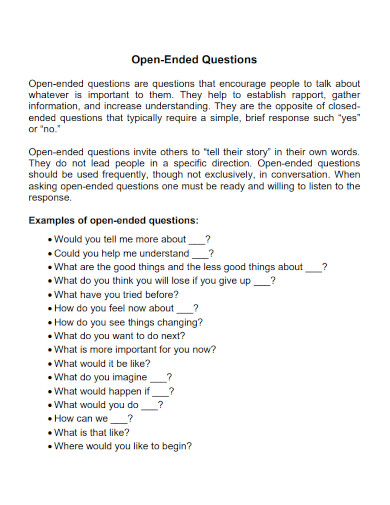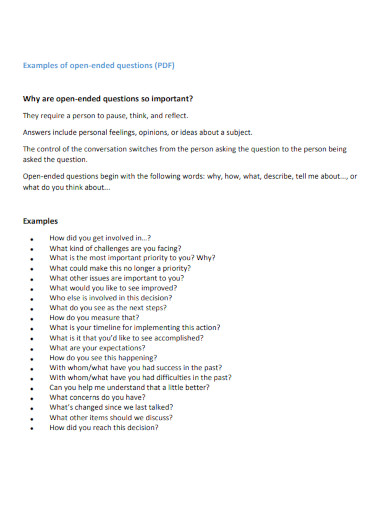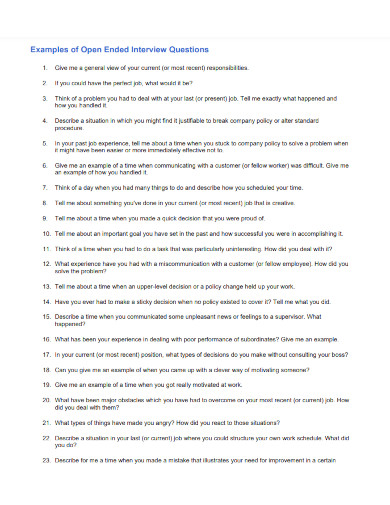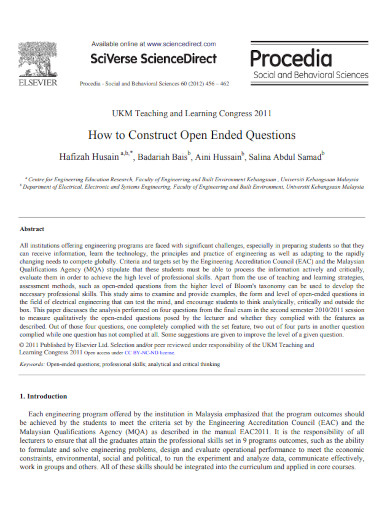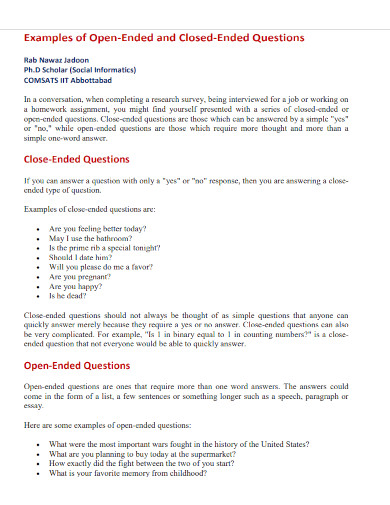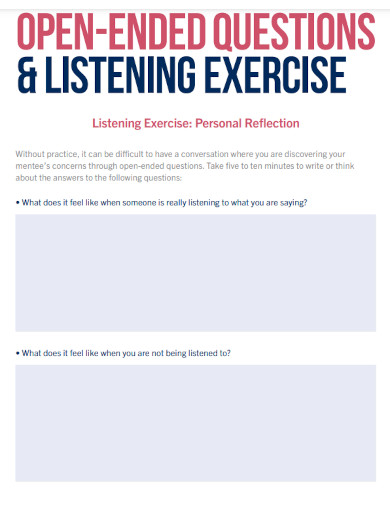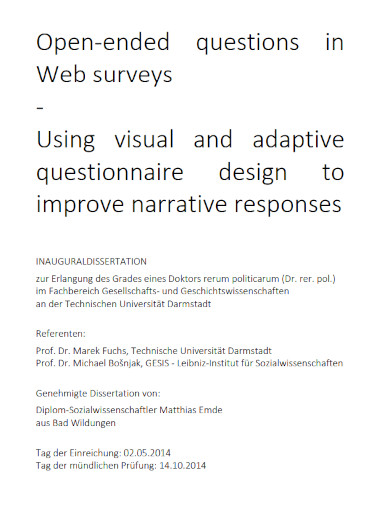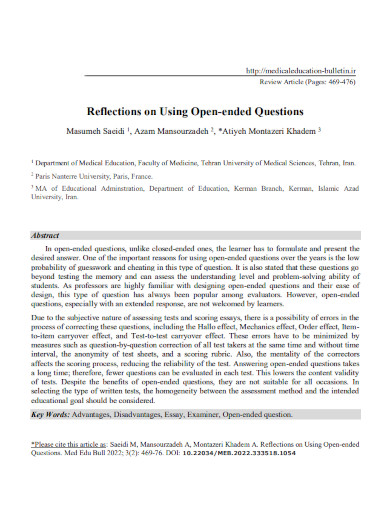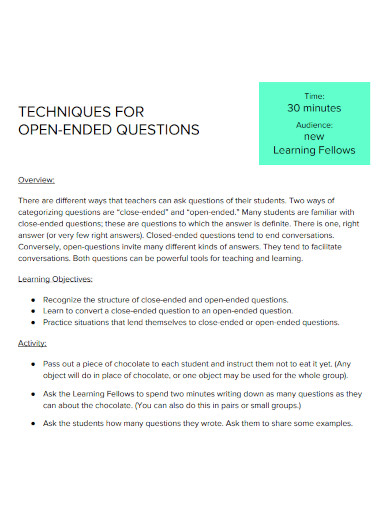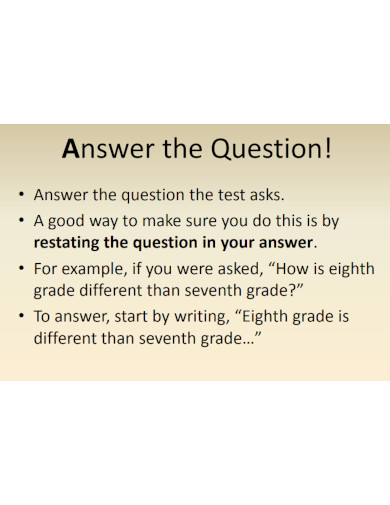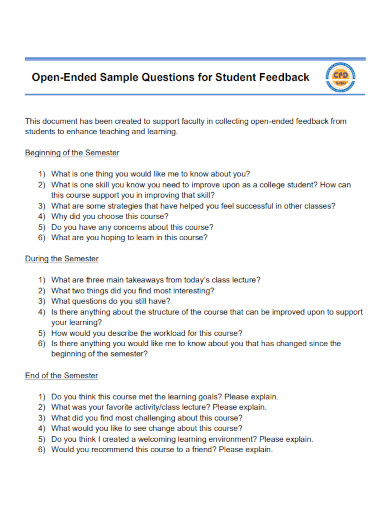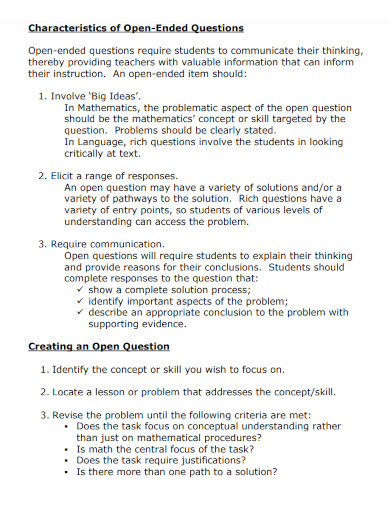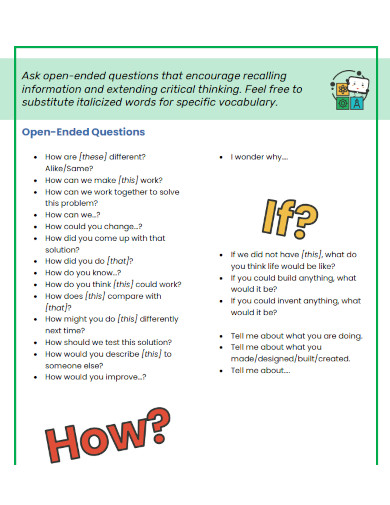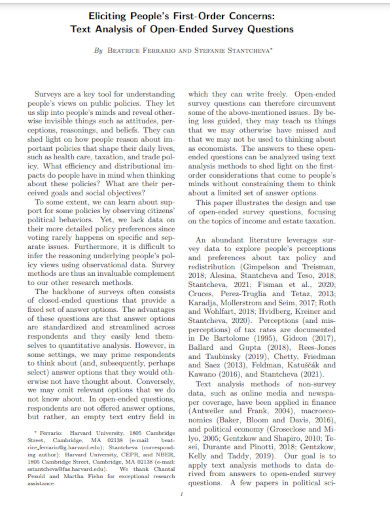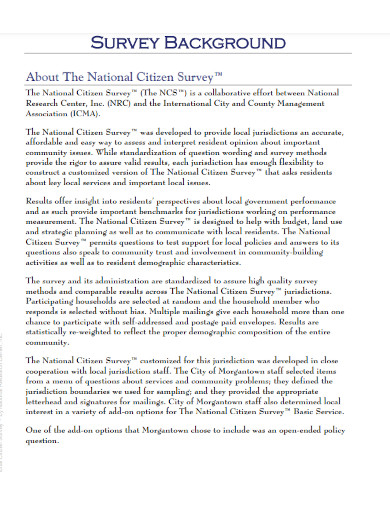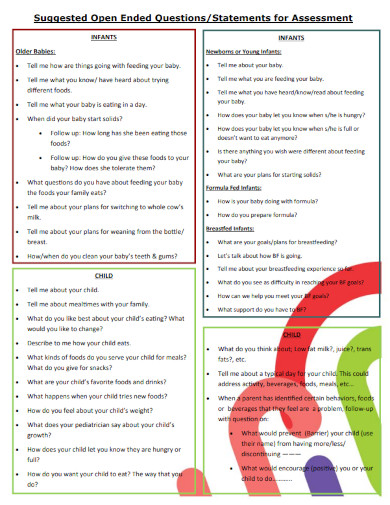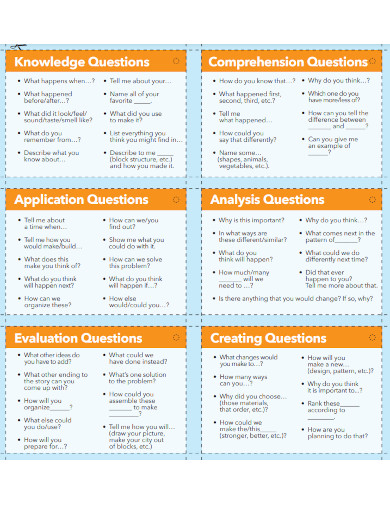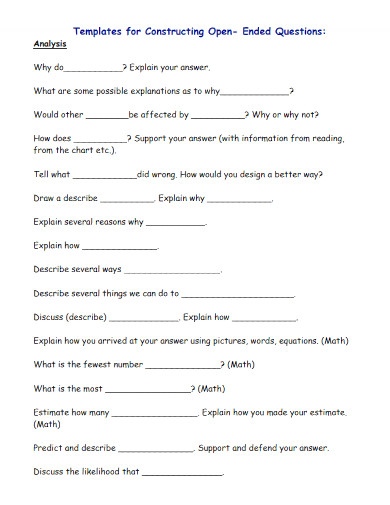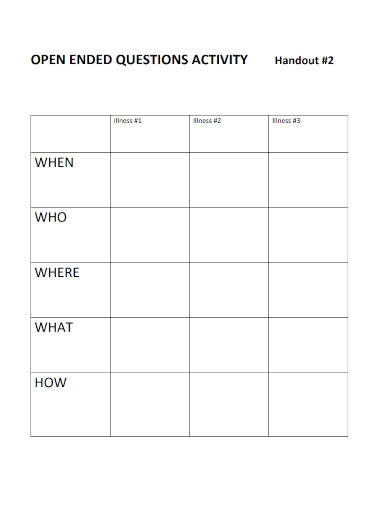20+ Open Ended Questions Examples to Download
The scientific method requires a lot of ways and methods to generate and gather important data. Interviews and case studies use a specific type of question, called open-ended questions, to gather subjective information. This type of question can also be used as a survey question.
1. Open-Ended Questions Template
2. Examples of Open Ended Questions
3. Examples of Open Ended Interview Questions
4. Constructing Open Ended Questions
5. Examples of Open-Ended and Closed-Ended Questions
6. Open-Ended Questions and Listening Exercise
7. Open Ended Questions in Web surveys
8. Reflections on Using Open-ended Questions
9. Open-ended Questions Techniques
10. Writing Responses to Open-Ended Questions
11. Open-Ended Questions for Student Feedback
12. Characteristics of Open-Ended Questions
13. Guide to Asking Open-Ended Questions
14. Summary of Responses to Open Ended Questions
15. Text Analysis of Open-Ended Survey Questions
16. Report of Open-ended Question
17. Suggested Open Ended Questions
18. Open-Ended Questions for Students
19. Templates for Constructing Open Ended Questions
20. Open Ended Questions Activity
What Is an Open-Ended Question
Open-ended questions are one of the two types of questions that allow the person to obtain subjective and highly interpretive information and data. This type of question acts as the juxtaposition of a close-ended question as the answers are more free-form than structured.
How to Create Open-Ended Questions
Well-crafted open-ended questions allow the person to learn more about another, which can lead to a flourishing relationship. If you are still unsure about the whole concept of open-ended questions or you want to have an open-ended question template to act as a sample or reference, feel free to use any of the links provided above.
Step 1: Choose the Intent of Your Question
Begin the creation process of the open-ended questions by selecting the specific context you want the question to tackle. For example, if you want to learn more about a person’s hobby, then the intent of our question should lean towards asking about the said person’s hobby.
Step 2: Outline the Sentence Structure
The open-ended question has a specific structure that will always begin with either or a combination of the following words. These words are “How”, “What”, and “Why”, and they should be located at the beginning of the open-ended question. This means you must outline the structure to properly convey the question you want to ask. If the answer you want is more action-oriented then you will need to use the word “How”, while a “What” or “Why” is more reasoning-oriented.
Step 3: Craft the open-ended Question
When you have finished the steps above, you must now create the open-ended questions. Using the same context as the example above, if we want to know more about the person’s hobby we can ask “What do you do in your free time?”.
Step 4: Repeat Steps 1 to 3 Until Satisfied
After you have finished creating your open-ended questions you may repeat the steps above until you feel like you have exhausted your curiosity. Note, you may create more open-ended questions based on the information you have obtained from the previous question.
FAQs
Are open-ended questions more optimal in surveys or qualitative data-gathering methods?
Open-ended questions are more optimal when researchers use them to obtain textual data from quantitative surveys through open-ended questions. But open-ended questions are at their peak when researchers use them to obtain qualitative data from interview questions and queries. This is because open-ended questions have more subjective answers than the other types of questions, which means that researchers will have a harder time quantifying data and codes from the answers to the open-ended questions. All of these reasons indicate that open-ended questions are more useful in gathering qualitative data than quantitative ones, but this does not mean that open-ended questions cannot be used in surveys.
What is the difference between open-ended questions and leading questions?
An open-ended question is a type of question that people use when they want to have a subjective and more personal answer. Often, people create open-ended questions that begin with the words “Why”, “What” and “How”. Leading questions on the other hand are questions that try to let the person answering the question to a specific conclusion or side. Most of the time leading questions will try to let the audience infer a specific outcome and convince them to answer in a specific way. Lawyers often use leading questions when compared to open-ended questions when cross-examining a witness, as they will allow the lawyer to improve and augment their case. Other than that, leading questions are frowned upon when researchers and scholars use them to gather data as they will skew the objectivity of the data and will bring way to various logical fallacies and biases.
Can I augment open-ended questions with a Likert scale?
Yes, you can obtain further information and data by augmenting open-ended questions with a Likert scale. The optimal pacing is that the question with the Likert scale should go before the open-ended question. Not only should the open-ended question go immediately after the Likert scale question, but the open-ended question should also indicate and refer back to the preceding question. This will ensure that you will not organically lose the interest and momentum of the person answering the questionnaire. You will obtain subjective data that will allow you to further understand the reasoning concerning the person’s answer.
Open-ended questions are a specific subtype of questions that will allow the person to obtain subjective information. This subjective information can lead to a further personal understanding of a person’s life, goals, objectives, and experiences. Not only do they allow the person to glean more personal information, but open-ended questions can also lend a specific nuance that one wouldn’t be able to easily obtain. In conclusion, a well-written open-ended question can create unique and hard-to-obtain information.



